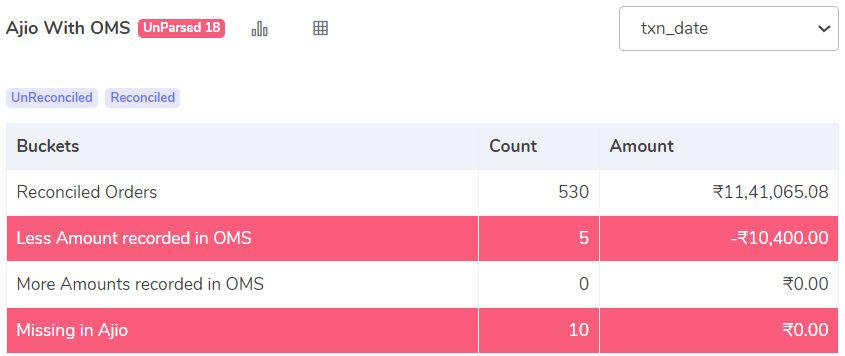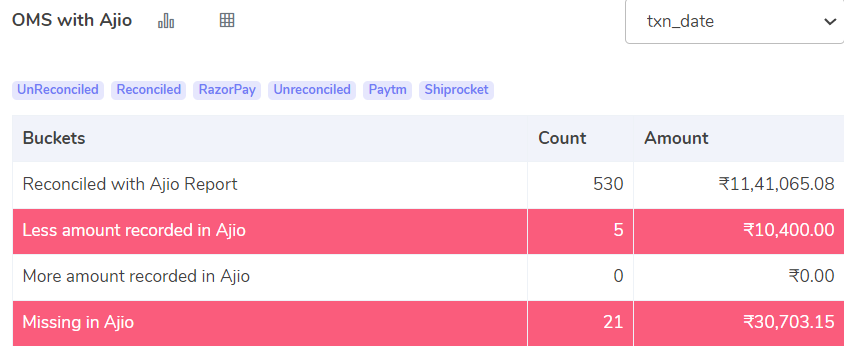Ajio is a place where carefully chosen, affordable current fashions may be found. Through Ajio, they are creating a distinctive e-commerce strategy for India using the state-of-the-art internet infrastructure set up by Ajio and a robust physical retail operation developed by Reliance Retail. The seamless integration of online and offline business models would be part of this paradigm, along with innovations in the areas of delivery services, the financial ecosystem, and improved customer experiences. Selling on Ajio’s marketplace is a fantastic opportunity for a vendor. A seller’s growth, as a result, will be exponential.
Because Ajio is so well-liked by customers, a vendor will be selling their goods on a very large scale, which is surely favorable to the vendor. On the other hand, keeping records and making sure that every transaction is completed with the utmost accuracy can be challenging tasks. A seller can quickly and properly record and evaluate transactions with this automated reconciliation system. A seller can quickly identify problems, correct them, or file a claim with Ajio to reduce payments or remedy errors. It may result in sellers losing money even when they are ignorant of it. This problem can only be solved by precise reconciliation, which is precisely what the Cointab system offers.
With the use of this automatic reconciliation system, a seller is able to accurately and promptly record and assess transactions. A seller can decrease payments or repair errors by identifying issues as soon as possible, fixing them, or filing a claim with Ajio.
Reports needed for reconciliation
- Ajio Order Report
- Ajio GST Report
- Ajio Return Report
- Ajio Payout Report
- Reports from the client’s OMS (e.g., Increff, Unicommerce, Easy Ecom)
By employing a common identity to link the aforementioned reports to the client OMS reports, the reconciliation process is started. The system then double-checks every order detail, including the item amount, fees that apply to the payment that was made, and fees that were levied.
The results are then presented in a simple, easy-to-understand format and are all available on a single dashboard.
The result is as follows:
Ajio – OMS Reconciliation

Each piece of information kept in the client’s OMS system is verified by the system, which also compares it to the Ajio Invoice report. The following distinctions and highlights are made for the orders:
- Reconciled Orders
- The transactions where the order amounts are equal.
- Less Amount recorded in OMS
- In the OMS, the order amounts for these transactions are less than what is shown in the Ajio Sales report.
- More Amounts recorded in OMS
- Order transactions in which the amount in the OMS exceeds the amount in the Ajio Sales report.
- Missing in Ajio
- Despite being recorded in the OMS system, the orders are not included in the Ajio reports.
OMS – Ajio Reconciliation

Each piece of information presented in Ajio reports is verified by the system, which then compares it to the client’s OMS. The following orders are then noted and identified:
- Reconciled with Ajio
- These are the transactions where the order amounts are the same in both reports.
- Less Amount recorded in Ajio
- Orders in which the Ajio Report amount is less than the OMS report amount.
- More Amounts recorded in Ajio
- The transaction orders recorded here have their amount in the Ajio Report exceeding the amount that was recorded in the OMS report.
- Missing in Ajio
- The transactions are missing in the Ajio reports but are recorded in the OMS system.
If reconciliation isn’t done correctly, businesses won’t be able to compete and remain relevant. Today’s business environment is getting more and more complicated. Making speedy and precise conclusions requires accurate verification. Utilizing the precise reconciliation method offered by Cointab is the most effective way to go about this.
